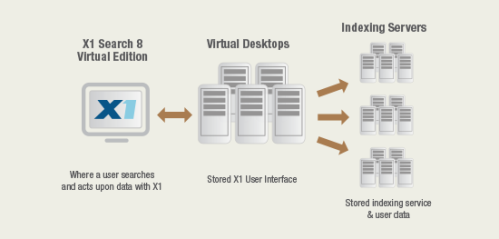Recently, I attended a very informative Microsoft GDPR Summit in Redmond, Washington. Microsoft invited their key compliance partners to brief them on Microsoft’s strong support for GDPR compliance within their Office 365 ecosystem, and to engage them in their strategy. The summit featured a slate of legal, compliance and technology experts who provided compelling insight into the GDPR, including challenges and opportunities for organizations as the May 25 enforcement date approaches.
Enza Iannopollo, a featured keynote speaker from Forrester, is an industry analyst with a deep focus on information security, data privacy and GDPR compliance. She noted that per a recent Forrester security survey, only about 30 percent of organizations report GDPR readiness. In her talks with major organizations, Iannopollo sees a strong if not belated commitment as they scramble to achieve readiness ahead of May 18. In terms of what it takes to effectuate GDPR compliance, Iannopollo presented a slide which simply stated the following: “Data Discovery and classification are the foundation of GDPR compliance.” Iannopollo said this is because the GDPR effectively requires that an organization be able to identify and actually locate, with precision, personal data of EU data subjects across the organization.
The speakers identified both a proactive and reactive requirement of data discovery under the GDPR. Iannopollo commented that a robust data discovery capability is needed to produce an intelligent data map, to classify and actually remediate non-compliant data. This data audit process should done at the outset, and also routinely executed on a recurring basis.
For reactive capabilities, Microsoft deputy general counsel John Payseno noted in a separate session that once GDPR enforcement comes online on May 25, 2018, organizations will be required to respond to data subject requests (DSRs) from individual, or groups of, EU data subjects. The DSRs under the GDPR consist of requests for data erasure, data transfer, or a confirmation that data permissively kept is done so in a minimal fashion without excessive duplication or re-purposing outside of the granted consent. Payseno said that companies must be able to document and demonstrate compliance with these DSRs, in a manner generally akin to responding to a subpoena or other legal requirement.
So a clear takeaway from the Microsoft summit is that GDPR compliance requires the ability to demonstrate and prove that personal data is being protected, requiring data audit and discovery capabilities that allow companies to efficiently produce the documentation and other information necessary to respond to regulators and EU private citizen’s requests. As such, any GDPR compliance programs are ultimately hollow without consistent, operational execution and enforcement.
While Microsoft demonstrated their capabilities to conduct effective data discovery in their O365 cloud environment, they openly acknowledge a significant gap for addressing on-premise unstructured data. Effective GDPR compliance requires the ability to gain immediate visibility into unstructured distributed data across the enterprise, through the ability to search and report across several thousand endpoints and other unstructured data sources, and return results within minutes instead of weeks or months as is the case with traditional crawling tools.
X1 Distributed Discovery (X1DD) represents a unique approach, by enabling enterprises to quickly and easily search across multiple distributed endpoints and data servers for PII and other data from a central location. Legal and compliance teams can easily perform unified complex searches across both unstructured content and metadata, obtaining statistical insight into the data in minutes, instead of days or weeks. With X1DD, organizations can also automatically migrate, collect, delete, or take other action on the data as a result of the search parameters. Built on our award-winning and patented X1 Search technology, X1DD is the first product to offer true and massively scalable distributed searching that is executed in its entirety on the end-node computers for data audits across an organization. This game-changing capability vastly reduces costs while greatly mitigating risk and disruption to operations.
X1DD operates on-demand where your data currently resides — on desktops, laptops, servers, or even the Cloud — without disruption to business operations and without requiring extensive or complex hardware configurations. Beyond enterprise eDiscovery, GDPR and other information governance compliance functionality, X1DD includes the award-winning X1 Search, improving employee productivity while effectuating that all too illusive actual compliance with information governance programs, including GDPR.





